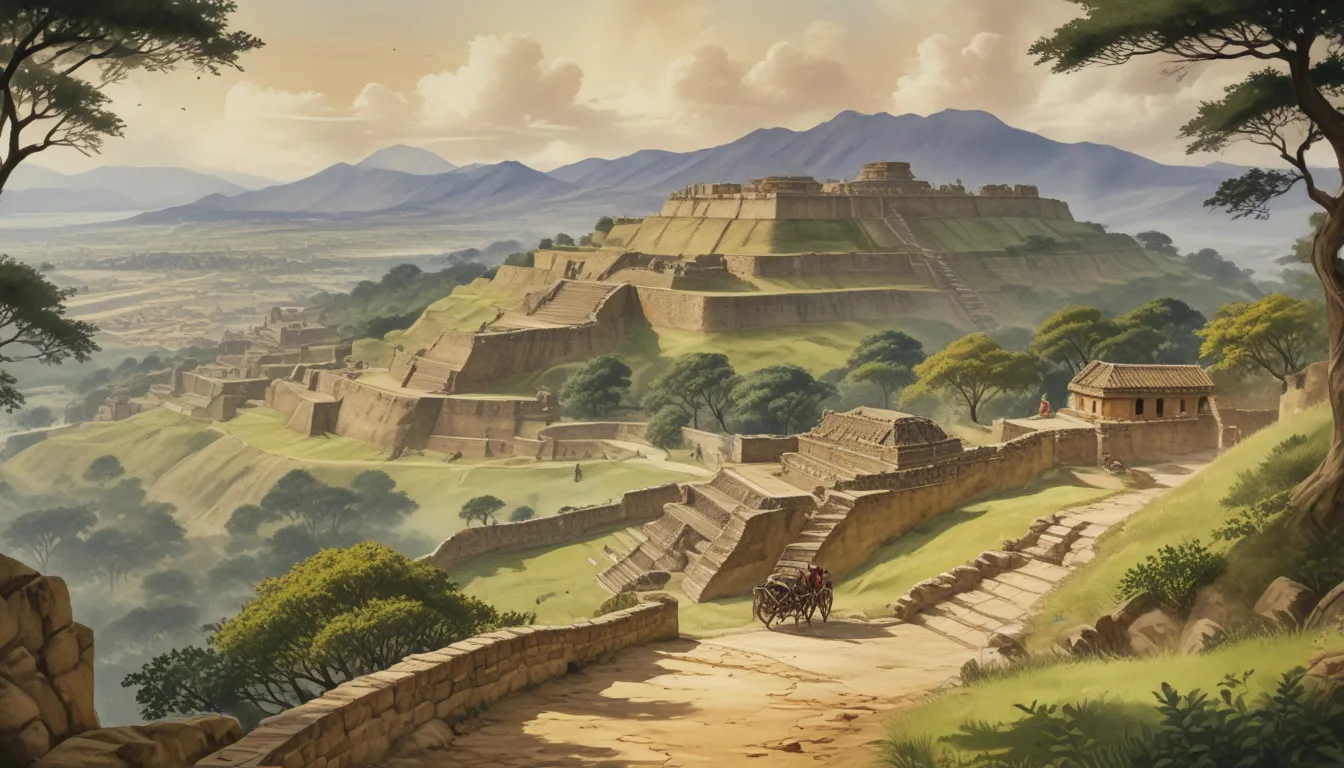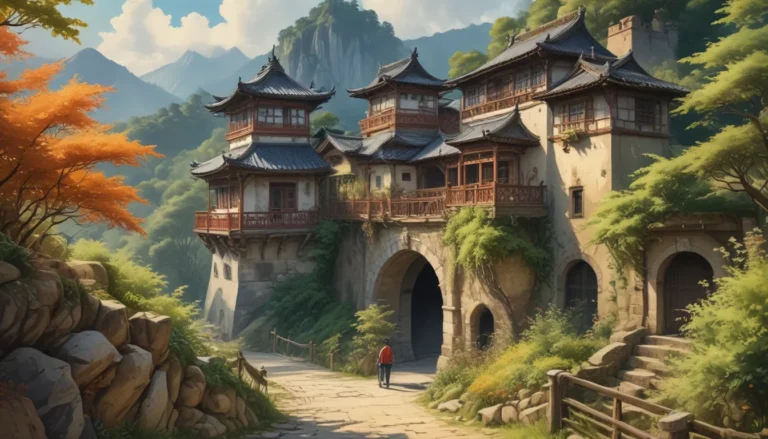The images in our articles are for illustrative purposes only and may not exactly match the content. They are intended to capture your interest and complement the text, not to replace it.
Welcome to the captivating world of Monte Albán, the awe-inspiring archaeological zone nestled in the picturesque state of Oaxaca, Mexico. This remarkable ancient city, perched on a hill overlooking lush valleys, is a testament to the ingenuity and architectural brilliance of its Zapotec inhabitants. In this article, we will embark on a journey through time to discover 12 astonishing facts about Monte Albán that will leave you in awe of this historical landmark. Whether you are a history enthusiast, an architecture aficionado, or simply curious about ancient civilizations, these facts will shed light on the rich heritage and impressive achievements of the Zapotec civilization.
Discovering the Marvels of Monte Albán
The Origin and Rise of Monte Albán
Let’s start our journey by exploring the origins of Monte Albán, an ancient archaeological site located in the southern state of Oaxaca, Mexico. Established as the capital of the Zapotec civilization around 500 BCE, Monte Albán translates to “White Mountain” in Spanish, reflecting its lofty hilltop location. This city thrived as a political, economic, and religious center, showcasing advanced architectural techniques and impressive urban planning.
Architectural Wonders: City Built on Terraces
A defining feature of Monte Albán is its intricate system of terraces, meticulously constructed to adapt to the site’s unique topography. These terraces provided stability for structures and efficient water drainage, demonstrating the ingenuity of the Zapotec people in urban planning and engineering.
Artistic Treasures: Intricate Stone Carvings
Monte Albán is renowned for its intricate stone carvings that adorn buildings, staircases, and altars throughout the site. These carvings depict mythical creatures, gods, and historical events, offering a fascinating glimpse into Zapotec culture and beliefs through artistry and symbolism.
Cultural Significance: Sacred Ballgame Court
The presence of an ancient ballgame court at Monte Albán highlights the importance of this sport in Mesoamerican civilizations. This court, surrounded by stone markers and structures, played a crucial role in religious and social activities, emphasizing the cultural significance of athletic events in ancient societies.
Unveiling the Mysteries of Monte Albán
Monumental Pyramids: Testaments of Power
Visitors to Monte Albán are captivated by its towering pyramid structures, with the monumental “Building J” standing over 40 meters tall. These pyramids served as religious and ceremonial centers, symbolizing the power and authority of the Zapotec rulers in this ancient city.
Celestial Wisdom: Astronomical Alignment
The architecture of Monte Albán reveals a profound understanding of astronomy, with structures in the main plaza aligned with the cardinal directions to mark solstices and equinoxes. This astronomical alignment showcases the advanced knowledge of the Zapotec civilization in observing celestial movements.
Treasures Unearthed: The Tomb of Lord Six Jaguar
One of the most remarkable discoveries at Monte Albán was the tomb of Lord Six Jaguar, a prominent ruler of the Zapotec dynasty. This tomb contained exquisite artifacts, including jade jewelry and precious stones, providing valuable insights into the wealth and culture of ancient Monte Albán.
Preserving the Legacy of Monte Albán
Defensive Grandeur: Strategic Hilltop Location
The strategic hilltop location of Monte Albán offered commanding views of the surrounding valley, providing both defensive advantages and a sense of grandeur for the Zapotec rulers. This positioning reflected their power and authority in the region.
Cultural Recognition: UNESCO World Heritage Site
In recognition of its historical and cultural significance, Monte Albán was designated a UNESCO World Heritage Site, underscoring the importance of preserving this ancient archaeological zone for future generations. This prestigious recognition highlights the global heritage value of Monte Albán.
Mystical Tombs: Insights into Burial Practices
Monte Albán is home to over 170 tomb structures that offer valuable insights into the burial practices and beliefs of the Zapotec people. These tombs provide a glimpse into their reverence for the afterlife and the rituals surrounding death in their civilization.
Exploring the Legacy of Monte Albán
The Decline of a Civilization: The Rise and Fall of Monte Albán
Despite thriving for centuries, Monte Albán began to decline around 800 CE, marking the end of its prominence as a cultural and political hub. The reasons for its downfall remain a subject of speculation, with theories citing political instability, environmental challenges, and shifts in trade routes.
Uncovering Ancient Secrets: Continued Excavations and Research
Excavations and ongoing research at Monte Albán continue to unravel the mysteries of the ancient Zapotec civilization. Archaeologists and scholars explore the site to gain insights into its history, architecture, and religious practices, contributing to our understanding of Mesoamerican civilizations.
Embarking on an Adventure
In conclusion, the Monte Albán Archaeological Zone stands as a testament to the architectural wonders and cultural richness of the Zapotec civilization. As you wander through its ancient ruins and marvel at the breathtaking views, you’ll be transported back in time to an era of splendor and grandeur. The 12 astonishing facts about Monte Albán only scratch the surface of the marvels awaiting you at this mesmerizing site. So pack your bags, embark on an adventure, and prepare to be amazed by the wonders of Monte Albán.
Frequently Asked Questions
-
Significance of Monte Albán: Monte Albán was the capital of the ancient Zapotec civilization, a hub of political, economic, and religious activities that showcased advanced architectural techniques and urban planning.
-
Age of Monte Albán: Originating around 500 BC, Monte Albán flourished for over a thousand years, reaching its peak during the Zapotec era between 200 and 700 AD.
-
Climbing the Pyramids: While climbing the pyramids is not allowed to preserve their integrity, designated areas offer a close view to appreciate their magnificence.
-
Guided Tours: Guided tours are available at Monte Albán, providing informative insights into its historical and cultural significance for a deeper understanding of its importance.
-
Best Time to Visit: The best time to visit Monte Albán is during the dry season, between November and April, offering pleasant weather and clear skies for breathtaking views of the landscapes.
Don’t miss out on exploring other fascinating sites and cultures around the world, from the architectural marvels of Fatehpur Sikri in India to the captivating pre-Columbian language of Nahuatl. Dive into the vibrant history and culture of Oaxaca, Mexico, through our informative articles. Join us on a journey of discovery and learning as we uncover the wonders of the world’s most intriguing places and peoples.
Your feedback is essential to us as we strive to deliver trustworthy and engaging content. Every fact on our site is contributed by real users like you, ensuring a diverse range of insights and information. Our dedicated editors meticulously review each submission to maintain the highest standards of accuracy and reliability. Trust in our commitment to quality and authenticity as you explore and learn with us.






